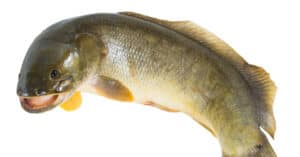North Carolina is an excellent place to go fishing. There are plenty of freshwater fish species that attract anglers from all over the world. One of the most common fish in the state is the walleye. Some of the best walleye fishing lakes in the state are Blewett Falls Lake, Lake James, Fontana Lake, Lake Chatuge, and Hiwassee Lake. In one of these lakes, an impressive angler caught the state walleye record. Follow along to discover the largest walleye ever caught in North Carolina, and where!
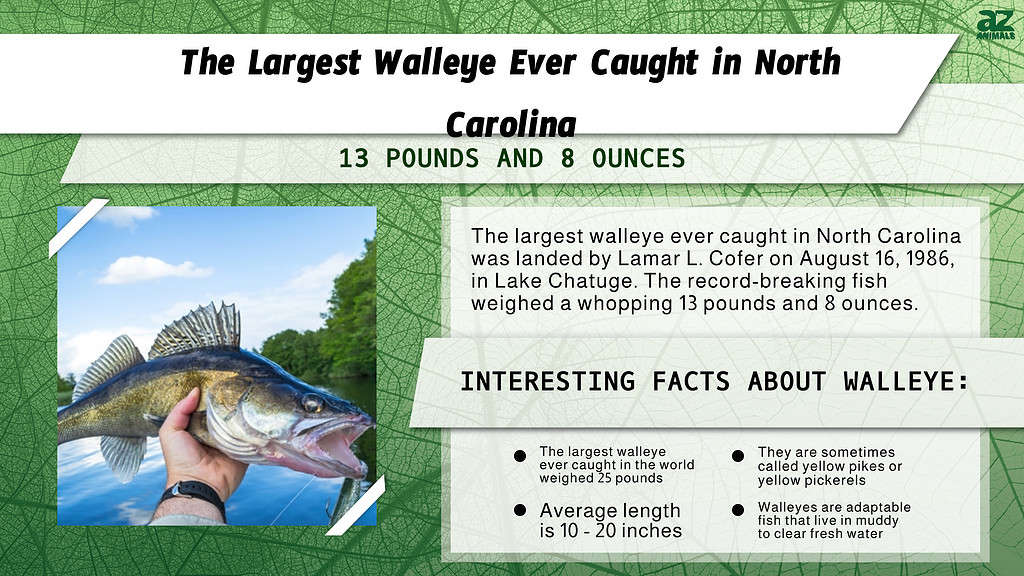
What is the Largest Walleye Ever Caught in North Carolina?
The largest walleye ever caught in North Carolina weighed 13 pounds and 8 ounces. Lamar L. Cofer caught this impressive state-record fish on August 16, 1986, in Lake Chatuge. Although impressive, the world-record walleye is nearly double the size of North Carolina’s state record. The largest walleye ever caught in the world weighed 25 pounds. Mabry Harper caught the 41-inch long walleye in Old Hickory Lake in Tennessee on August 2, 1960.

The largest walleye ever caught in North Carolina weighed 13 pounds and 8 ounces.
©iStock.com/FedBul
About Walleye
Walleye fish go by many names. They are sometimes called yellow pikes or yellow pickerels. This lovely fish species is a member of the Percidae family. Follow along to learn more about this fish including its size, habitat, native range, diet, and predators.
Description and Size
Walleyes are large olive-green and gold shimmering fish. They also have five darker saddles that extend to the upper sides and varying shades of white bellies. Walleyes have large and wide mouths.
These fish are about 10 to 20 inches long. On average, they weigh about 1 to 5 pounds. Walleyes are fast growers. By the time they reach 1 year, they are about 5 inches long.
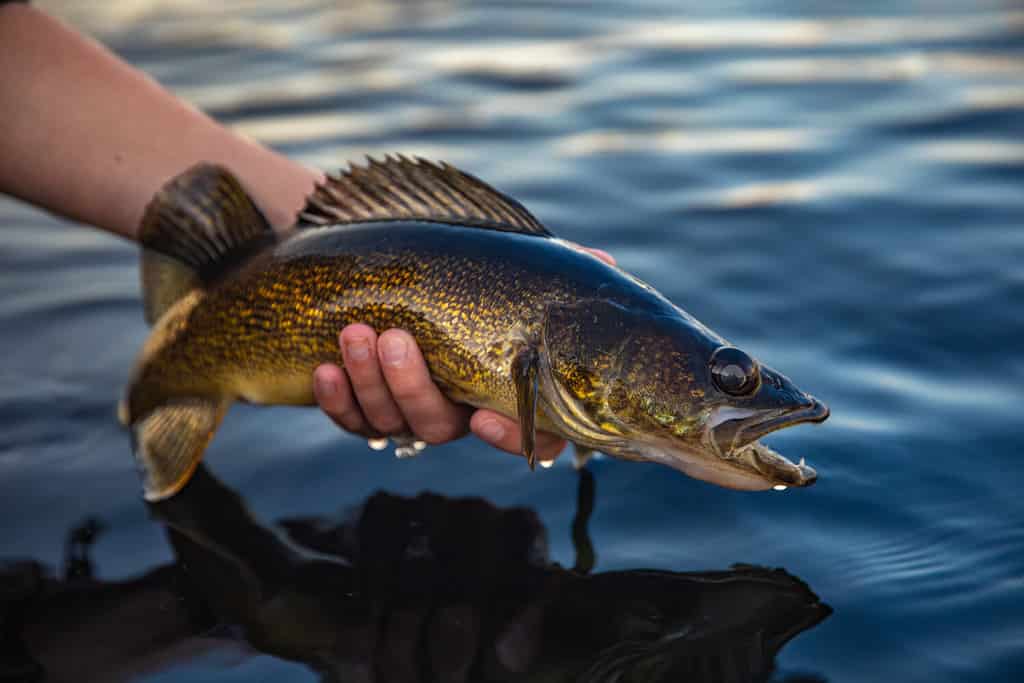
On average, most walleyes weigh about 1 to 5 pounds.
©Harlan Schwartz/Shutterstock.com
Distribution and Habitat
So, where are walleyes from? Walleyes have a wide range. They are native to the Great Lakes, the Missouri River basin, Canada, and the upper Mississippi River basin. However, while walleyes aren’t native to the entire United States, they’ve been widely introduced.
Walleyes live in most freshwater bodies of water including rivers and lakes. You can find them in clear, muddy, shallow, and deep water. They aren’t picky and adapt well.
Diet
Young walleye mainly eat zooplankton. However, larger adult walleye almost entirely eat fish, insects, and crustaceans. Walleyes typically hunt in shallow water during the hours surrounding both dawn and dusk.
Predators
Walleyes have a lot of predators. Although fast, most walleye fish are small to medium-sized, rarely weighing past 5 pounds. They are often targeted by other larger fish-eating fish and birds. However, the larger a walleye grows, the fewer predators they have. Instead, mostly young walleyes and walleye eggs are vulnerable. Some fish that may eat walleyes include largemouth bass, white perch, and muskies.
Other Fish in North Carolina
North Carolina is a paradise for anglers. Some of the largest fish in the country have been caught in this state! There are many lakes, ponds, and reservoirs to choose from. Listed below are a few fish species anglers look for and their impressive North Carolina records.
Yellow Perch
The first fish on our list is the yellow perch. They are very common in North Carolina. You can especially find these bright fish in Lake Waccamaw, White Lake, and the Neuse River. Yellow perch are native to large parts of North America in Canada and the United States. However, they’ve been introduced to nearly all of the United States and other countries like Japan and China. Yellow perch can reach up to 20 inches long, although most are closer to 10 inches. How does the North Carolina state record hold up? In 2001, Bob G. Williams, Jr. caught a 2-pound and 15-ounce yellow perch in the Falls of the Neuse Reservoir.
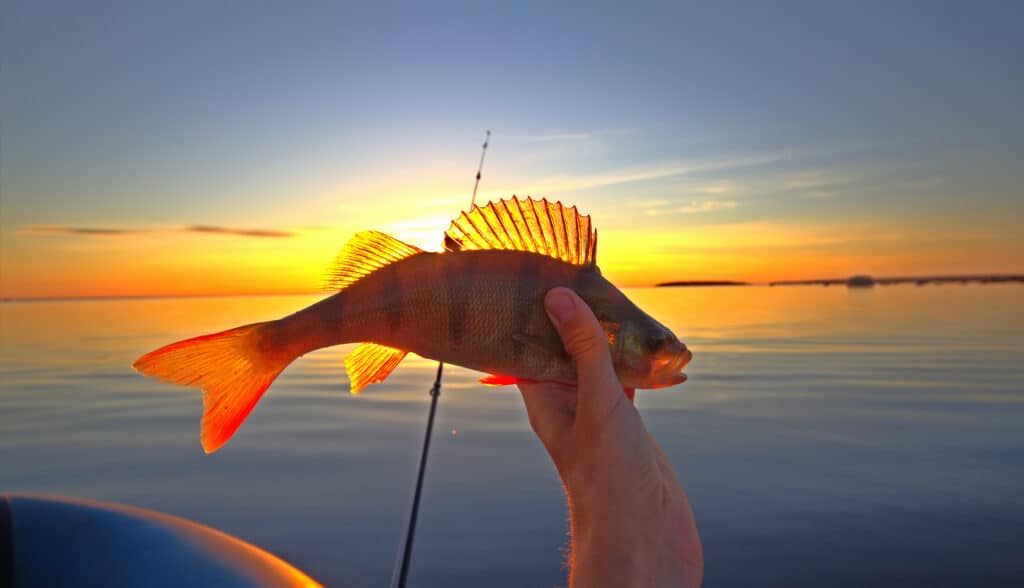
The Yellow Perch is a favorite of anglers, both for its level of fight and its great taste.
©Maximilliam cabinet/Shutterstock.com
Black Crappie
Another fish you can find in North Carolina is the black crappie. The black crappie lives in all 48 continental states in the United States. Black crappies are beautiful colorful fish with seven or eight spines on its dorsal fin. They are known for their black spots. Black crappies are mainly silvery-gray to green. These fish are about 4 to 8 inches long, although some can get as big as 19 inches. Fun fact, the maximum weight of a black crappie is 5 pounds and 7 ounces. Although not as large, North Carolina’s black crappie record is still impressive! Using a minnow, Dean Dixon caught a 4-pound and 15-ounce black crappie in Asheboro City Lake #4 on April 27, 1980.

Black crappies are popular for their taste.
©Smithsonian Environmental Research Center / CC BY 2.0, Flickr – License
Bluegill
Bluegills have many nicknames. They are sometimes called copper noses or sunnies. Bluegills are native to freshwater bodies east of the Rocky Mountains. They are small fish, that only reach about 12 inches long and weigh 4 pounds and 12 ounces. Bluegills are easy to identify from their black spot, often called their ‘ear’. Bluegills though aren’t entirely black or blue. They vary in color but are typically green, orange, and blue. Although not as heavy as the world record, the North Carolina bluegill state record is still very amazing! In 1967, Danny Case caught a 4-pound and 5-ounce bluegill using a Catalpa worm in Henderson County.
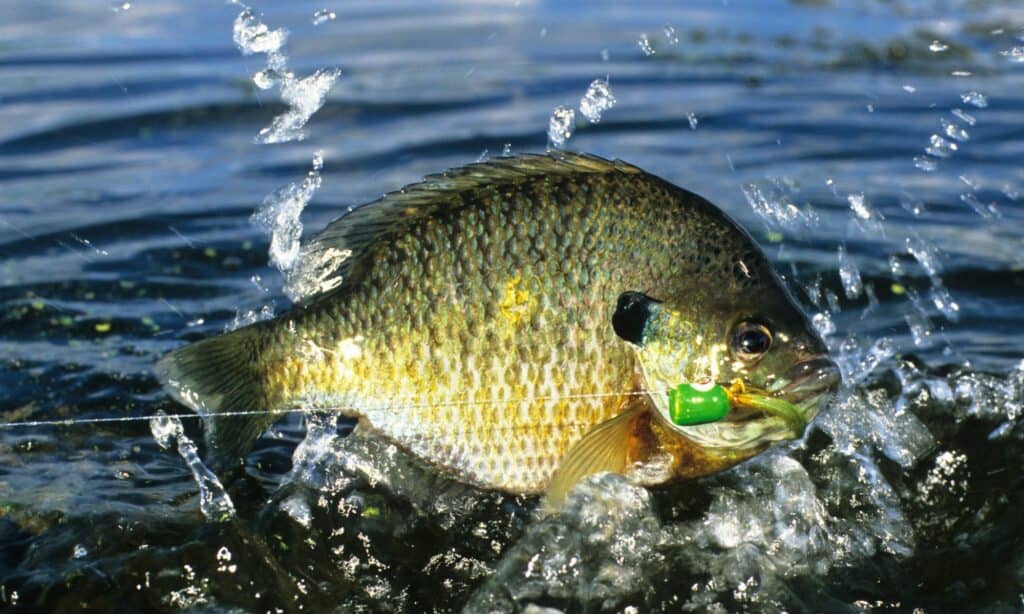
The largest bluegill ever caught in North Carolina has held the record since 1967.
©iStock.com/stammphoto
Largemouth Bass
Largemouth bass are a very popular fish for anglers. They are common throughout the United States and are commonly stocked in many lakes and reservoirs. Largemouth bass are loved for their flavor, texture, and fight. They can be tricky to catch as they are strong and fight back. Largemouth bass are olive-green to greenish-gray fish that weigh up to 25 pounds. The maximum recorded length of a largemouth bass is 29.5 inches. Although not as large as the world record, the largest largemouth bass caught in North Carolina is quite the beast. In 1991, William H. Wofford used a crankbait to catch a 15-pound and 14-ounce largemouth bass in Farm Pond.

Largemouth bass can weigh up to 25 pounds.
©Pierre Rebollar/Shutterstock.com
Rainbow Trout
The next fish on our list that lives in North Carolina is the rainbow trout. Rainbow trouts are vibrant fish native to cold-water tributaries of the Pacific Ocean in Asia and North America. There are many subspecies of rainbow trout and they range in color and size. Some are anadromous, while others only live in freshwater. Rainbow trout may weigh as little as 1 pound or as much as 20 pounds. They are known for their broad reddish stripe along the lateral line, which is more prominent in breeding male rainbow trouts. North Carolina’s state record rainbow trout weighed 10 pounds and 3 ounces. Leah Johnson impressively caught this beast in 2006 in the Horsepasture River.
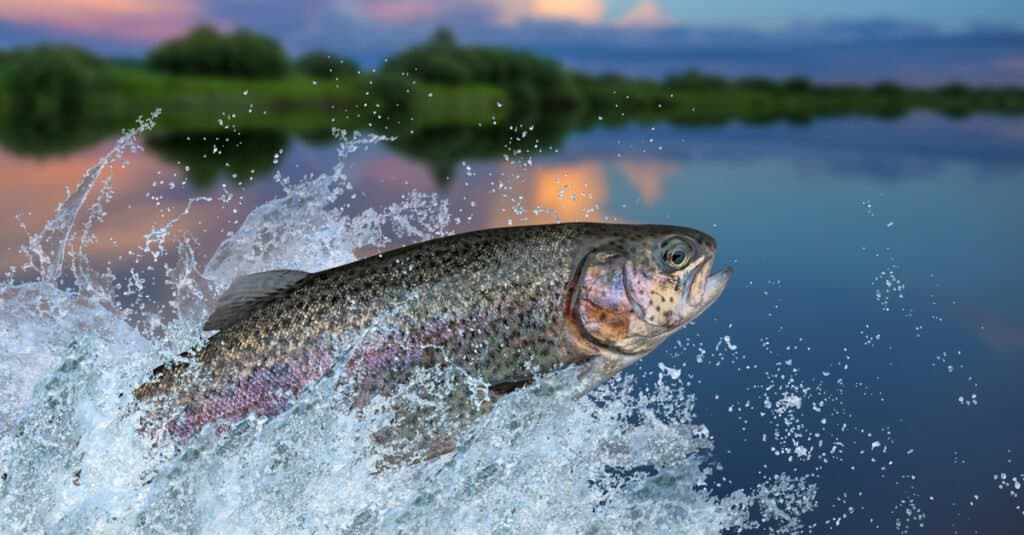
Rainbow trout are commonly found throughout the United States.
©FedBul/Shutterstock.com
Flathead Catfish
Last but not least is the flathead catfish. This lovely catfish species has a lifespan of about 12 to 14 years. It’s often called the mudcat or shovelhead cat. Flathead catfish have a wide range. You can find them from the lower Great Lakes region to northern Mexico. Flathead catfish are very big. They can reach massive lengths up to 61 inches and weigh as much as 123 pounds. The largest recorded flathead catfish ever caught weighed 139 pounds. This is nearly double the size of North Carolina’s state record! In 2020, Tyler Barnes caught a 78-pound and 14-ounce in the Neuse River using a live sunfish.
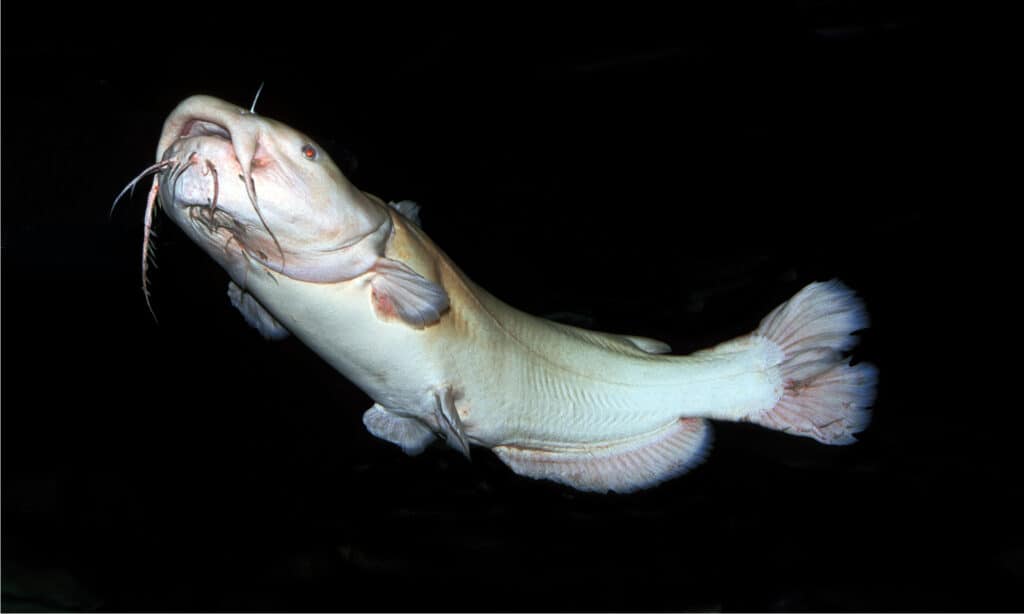
Flathead catfish are very big. The largest flathead catfish ever recorded weighed 139 pounds.
©slowmotiongli/Shutterstock.com
The photo featured at the top of this post is © iStock.com/Vladyslav Danilin
Thank you for reading! Have some feedback for us? Contact the AZ Animals editorial team.





